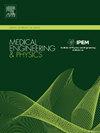Advances and future trends in the detection of beta-amyloid: A comprehensive review
IF 1.7
4区 医学
Q3 ENGINEERING, BIOMEDICAL
引用次数: 0
Abstract
The neurodegenerative condition known as Alzheimer's disease is typified by the build-up of beta-amyloid plaques within the brain. The timely and precise identification of beta-amyloid is essential for understanding disease progression and developing effective therapeutic interventions. This comprehensive review explores the diverse landscape of beta-amyloid detection methods, ranging from traditional immunoassays to cutting-edge technologies. The review critically examines the strengths and limitations of established techniques such as ELISA, PET, and MRI, providing insights into their roles in research and clinical settings. Emerging technologies, including electrochemical methods, nanotechnology, fluorescence techniques, point-of-care devices, and machine learning integration, are thoroughly discussed, emphasizing recent breakthroughs and their potential for revolutionizing beta-amyloid detection. Furthermore, the review delves into the challenges associated with current detection methods, such as sensitivity, specificity, and accessibility. By amalgamating knowledge from multidisciplinary approaches, this review aims to guide researchers, clinicians, and policymakers in navigating the complex landscape of beta-amyloid detection, ultimately contributing to advancements in Alzheimer's disease diagnostics and therapeutics.

β -淀粉样蛋白检测的进展和未来趋势:全面回顾
被称为阿尔茨海默病的神经退行性疾病的典型特征是大脑中β -淀粉样蛋白斑块的积聚。及时准确地识别β -淀粉样蛋白对于了解疾病进展和制定有效的治疗干预措施至关重要。这篇全面的综述探讨了β -淀粉样蛋白检测方法的多样性,从传统的免疫测定到尖端技术。这篇综述批判性地考察了ELISA、PET和MRI等现有技术的优势和局限性,并深入了解了它们在研究和临床环境中的作用。新兴技术,包括电化学方法、纳米技术、荧光技术、即时护理设备和机器学习集成,都进行了深入的讨论,强调了最近的突破及其对β -淀粉样蛋白检测的革命性潜力。此外,该综述深入探讨了与当前检测方法相关的挑战,如敏感性、特异性和可及性。通过整合多学科方法的知识,本综述旨在指导研究人员、临床医生和政策制定者在β -淀粉样蛋白检测的复杂图景中导航,最终促进阿尔茨海默病诊断和治疗的进步。
本文章由计算机程序翻译,如有差异,请以英文原文为准。
求助全文
约1分钟内获得全文
求助全文
来源期刊

Medical Engineering & Physics
工程技术-工程:生物医学
CiteScore
4.30
自引率
4.50%
发文量
172
审稿时长
3.0 months
期刊介绍:
Medical Engineering & Physics provides a forum for the publication of the latest developments in biomedical engineering, and reflects the essential multidisciplinary nature of the subject. The journal publishes in-depth critical reviews, scientific papers and technical notes. Our focus encompasses the application of the basic principles of physics and engineering to the development of medical devices and technology, with the ultimate aim of producing improvements in the quality of health care.Topics covered include biomechanics, biomaterials, mechanobiology, rehabilitation engineering, biomedical signal processing and medical device development. Medical Engineering & Physics aims to keep both engineers and clinicians abreast of the latest applications of technology to health care.
 求助内容:
求助内容: 应助结果提醒方式:
应助结果提醒方式:


